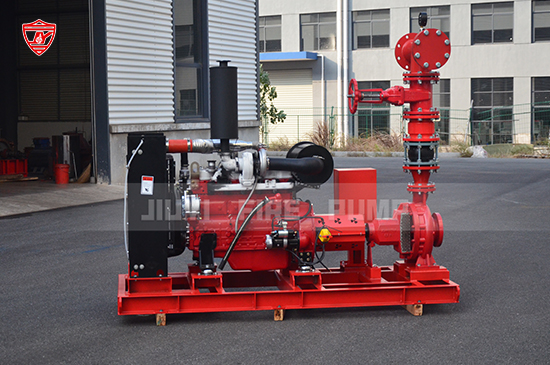A fire pump alarm system is a critical component of any fire protection setup. It provides real-time alerts when the fire pump starts, fails, or operates under abnormal conditions. A properly installed and configured alarm system ensures that building personnel or emergency responders are immediately notified when something goes wrong—allowing quick response and minimizing risk.
In this guide, we’ll cover how to set up a compliant and effective fire pump alarm system.

A fire pump alarm system serves several vital functions:
Notify personnel when the pump starts (manual or automatic)
Alert on abnormal conditions like low suction pressure or motor failure
Indicate when the pump is running too long or outside of normal cycles
Log critical events for maintenance or troubleshooting
These alarms can be visual, audible, or connected to a building management system (BMS) or fire alarm control panel (FACP).
NFPA 20 outlines the required signals for fire pump alarms. At a minimum, the following conditions must be monitored:
Pump running
Controller power failure
Phase reversal (for electric motors)
Failure to start
Low suction pressure
Charger failure (for diesel engines)
Engine running
Low fuel or high engine temperature (for diesel systems)
These alarms must be supervised and annunciated remotely, typically in a constantly attended location.
Your fire pump alarm system typically includes:
Pressure switches (to detect pump start/stop)
Flow sensors (to verify water flow through the system)
Pump controllers with built-in alarms
Remote alarm panel or building monitoring integration
Visual and audible indicators (e.g., strobe lights, buzzers)
Supervisory relays for power loss, phase failure, etc.
Select components compatible with your pump type (electric or diesel) and controller model.
Proper wiring is essential to ensure alarm signals reach the designated location. Depending on your system setup, alarms may be connected to:
A fire alarm control panel (FACP)
Building management system (BMS)
Dedicated remote alarm panels
Automated alert systems (email/SMS/voice notification)
All wiring should be tamper-proof, clearly labeled, and in accordance with electrical and fire codes.
After installation, test each alarm condition:
Simulate pump start (automatic and manual)
Disconnect power to test power failure alarm
Trigger low suction pressure and flow switch
Test diesel engine alarms (battery, temperature, fuel)
Ensure alarms activate at the remote panel or FACP
Document the results and make sure the system resets properly after each alarm.
Make sure facility personnel know:
What each alarm means
Where alarm indicators are located
How to respond to alarm conditions
How to reset or silence alarms (if permitted)
Quick recognition and response can make a critical difference in an emergency.
A properly set up fire pump alarm system improves safety, ensures code compliance, and enhances the reliability of your fire protection system. By following NFPA 20 guidelines, using quality components, and integrating with your building’s emergency alert infrastructure, you can ensure your fire pump system will never operate unnoticed.
Regular testing and staff training are equally important to keep everything running smoothly when seconds matter most.